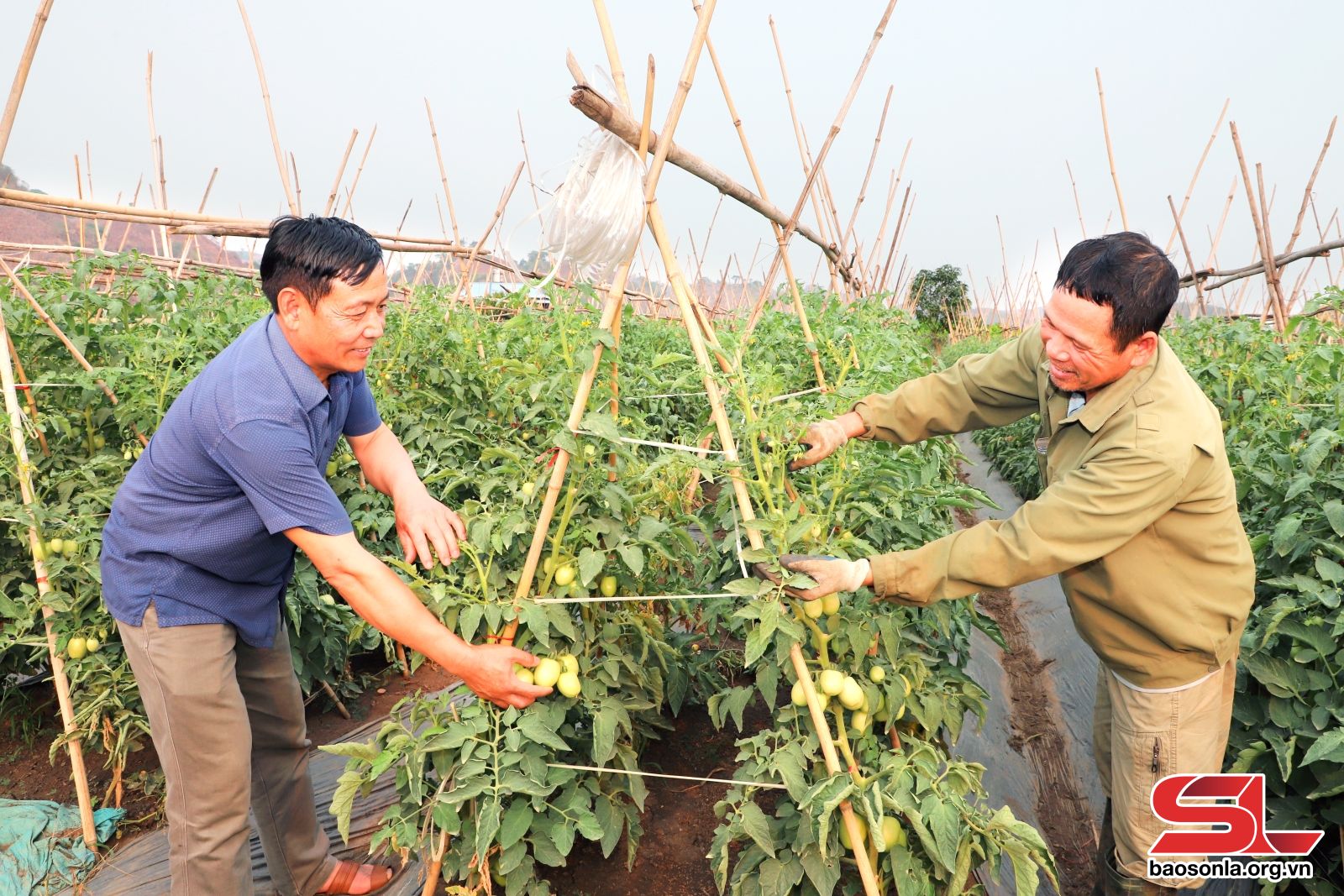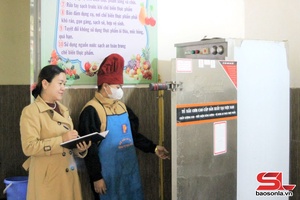
With advantages in land resources, terrain, and climate, the people of Chieng Ban commune have actively brought Arabica coffee varieties into cultivation, forming a specialised coffee growing area of over 1,250 hectares. The commune has established groups and cooperatives to cooperate in production, with companies and businesses in the district joining hands in purchasing products.
Doan Quang Dung, Chairman of the communal People's Committee, said that farmer households are provided by companies and businesses with seedlings, fertilisers, technical training, and instructions on how to produce coffee according the VietGAP process, thus improving product value. Currently, 1 hectare of coffee earns farmers a stable income of over 100 million VND (3,932 USD) per year.
Mai Son has more than 49,000 hectares of agricultural land, mainly growing coffee, custard apple, mango, grapefruit, sugarcane, cassava, strawberry and other crops. Developing agricultural crops in each region to increase people's income, and promote socio-economic development is the right direction of Mai Son district.
According to Cam Thi Khay, Vice Chairwoman of the district People's Committee, for communes with advantages in crops, the district has directed them to well implement growing plans; strengthen coordination with specialised agencies to open technical training courses; build growing area codes, develop production chains, and support trade promotion and product sale; encourage farmers to promote organic plant and animal farming, ensuring food hygiene and safety, and increasing the value of agricultural products, serving domestic consumption and export.
Co Noi commune alone has 2,114 hectares of fruit trees of all kinds, including nearly 307 hectares granted planting area codes, over 49 hectares certified with the VietGAP standard, and more than 1,124 hectares using irrigation technology. Its fruit output is estimated at 24,500 tonnes a year. The commune has persuaded local people to follow the VietGAP, organic, green, clean, safe and sustainable processes. For farmers to share experience and support each other in production, the commune encouraged locals to set up 29 agricultural cooperatives, form linkages in production, and find stable consumption markets for agricultural products, said Nguyen Anh Thu, Chairman of the communal People's Committee.
Co Noi commune’s Lech hamlet has nearly 130 hectares of agricultural land. Local farmers have actively applied techniques to production, thus increasing crops and income. Nguyen Dinh Trien, a resident in the hamlet, said that his family has 1.2 hectares of farming land, including more than 7,000 square meters for custard apple. The remaining area is for off-season crops. The annual revenue reaches over 500 million VND (19,660 USD).
The entire district now boasts 11,200 hectares of fruit trees, with an output of 90,000 tonnes per year, including 4,201 hectares using high technology; 1,800 hectares under organic farming; and 1,119 hectares meeting the VietGAP standard. There are three high-tech production areas, with a total area of 1,373.7 hectares (including two coffee areas spanning 1,039.5 hectares and one custard apple area covering 334.2 hectares). Nearly 1,500 hectares use irrigation technology. Domestic consumption and export of coffee, tea, tapioca starch, mango and passion fruit bring 49.47 million USD per year to the district.
In the next steps, Mai Son district will continue to encourage people to apply new techniques to crop production and care, and gradually transform the agricultural and rural economic structure towards diversifying products and developing green and sustainable agriculture.























You have 500/500 characters left
Please enter 5 or more characters!!!